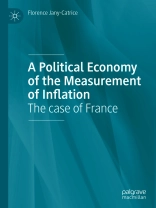Inflation should no longer be a politically sensitive indicator. Indeed, since the early 1980s, macroeconomic policies have managed to contain it. Yet the consumer price index (CPI), which is the main indicator for measuring inflation, remains very frequently consulted by citizens, due to its multiple uses. The CPI is used for indexing wages, pensions, but also various contracts such as food pensions. It is also used by National Accounts to deflate macroeconomic values and to provide data in “real” terms. But how is this CPI measured? index? What reforms have happened to give shape to the XXIst century CPI?
This book presents the CPI based on the study of the controversies that have marked its history. Set in both the socio-economic and ideas contexts, these controversies show the eminently conventional and political nature of the CPI and, therefore, of many other macroeconomic indicators, such as growth or productivity.
Daftar Isi
Introduction.- 1.What is a Price Index – Statistical Approach.- 2. A Political Economy of the Price Index, 1913-1990.- 3. The European Turning Point.- 4. The Quality Effect.- 5. From Consumer Prices to the ‘Cost of Living’.- 6. The Reform of “Checkout Data”.- 7. Under or Overestimation of Inflation?.- Conclusion.
Tentang Penulis
Florence Jany-Catrice is Full Professor of Economics at the University of Lille, France. She conducts her research at Clersé (Lille Center for Economic and Sociological Studies and Research) -UMR 8019 around the quality economy (work, employment, services, wealth) and its measures. Florence Jany-Catrice chairs the French association of political economy (AFEP). She is also visiting professor at Xi’An University, China and is Richard B. Fisher Member, School of Social Science (2020-21), Institute for Advanced Study, Princeton, USA.












